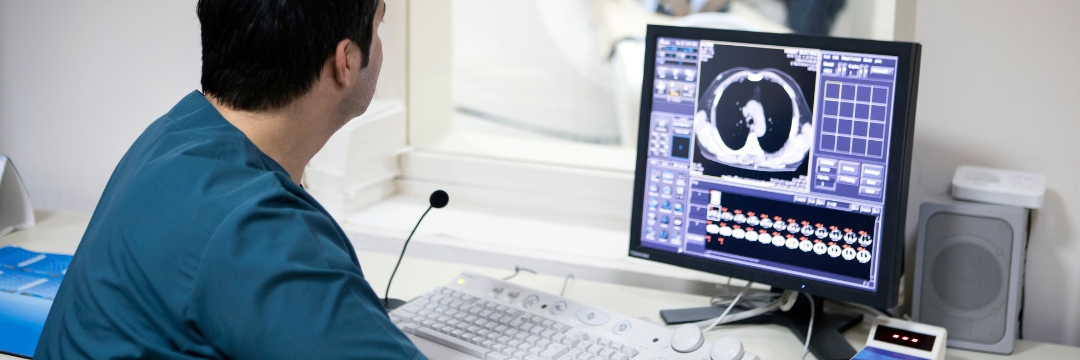How is Laparoscopy Done | Trusted Hospitals in Haldwani

There was a time when most major health conditions meant one thing: surgery. Open procedures, long recovery periods, visible scars, and weeks of bed rest. But over the past two decades, medical science has changed that reality. Today, for many conditions, doctors can treat you without even making a single stitch-worthy cut. This shift is thanks to a specialty that’s quietly reshaping modern medicine – Interventional Radiology.
If you’re wondering, what is interventional radiology? You’re not alone. Many patients in towns like Haldwani hear the term for the first time when it’s actually suggested as a treatment option. Sai Hospital is here to walk you through what this specialty means, when it’s used, and how it’s changing the face of advanced care.
What is Interventional Radiology?
Interventional Radiology (IR) is a medical specialty where doctors use imaging technologies, like X-rays, ultrasounds, CT scans, and MRIs, to guide tiny instruments inside your body to diagnose or treat conditions, without traditional surgery. So, instead of making large incisions, an interventional radiologist inserts a needle or catheter (a thin tube) through a pinhole in your skin and uses live imaging to navigate to the problem area.
If you are still wondering what is interventional radiology, think of it as image-guided, minimally invasive treatment. And the best part? These procedures are typically –
- Less painful
- Requires no general anesthesia
- Have shorter hospital stays
- Come with quicker recovery times
What Conditions Can Be Treated with Interventional Radiology?
Here’s where it gets impressive. Interventional radiology isn’t limited to one type of disease or organ. It’s used across specialties — from cancer and kidney problems to blood vessel blockages and uterine issues. Below are some common conditions treated using IR –
1. Uterine Fibroids
Many women suffer from heavy bleeding or pelvic pain due to fibroids. Uterine Fibroid Embolization (UFE) is an IR procedure where the blood supply to the fibroids is blocked, causing them to shrink — no open surgery needed.
2. Varicose Veins
Unsightly and painful varicose veins can now be closed off using image-guided laser or radiofrequency techniques via catheters.
3. Liver Cancer or Tumors
Through a procedure called Transarterial Chemoembolization (TACE), medications are directly delivered to liver tumors, minimizing damage to healthy tissues.
4. Kidney and Gallbladder Drainage
Blocked or infected organs can be relieved using catheters without needing a surgical opening.
5. Blood Clots or Blockages
IR is used to place stents, balloons, or administer medications directly into arteries to treat clots, aneurysms, or narrowed vessels.
6. Biopsies and Drainages
Instead of blind needle pokes, image-guided biopsies allow precise sampling of tissues or draining of abscesses with minimal risk.
7. Dialysis Access Management
When dialysis access sites get blocked or fail, interventional radiologists can reopen them with angioplasty or stents.
So, when someone asks you what is interventional radiology, you can now say – it’s a field that treats serious conditions without surgery.
What Happens During an IR Procedure?
A lot of people imagine large machines and surgical lights when they hear about interventional radiology. But the process is far simpler and calmer than expected. Here’s what a typical IR procedure involves –
- Preparation – You’ll be advised to fast for a few hours before the procedure. Most procedures are done under local anesthesia, so you stay awake but relaxed.
- Imaging – The interventional radiologist uses real-time imaging (ultrasound, fluoroscopy, or CT) to guide them.
- Needle or Catheter Insertion – A tiny hole is made in your skin, usually less than 5 mm. Through this, the doctor inserts a catheter or wire and guides it to the treatment area.
- Treatment – Once the catheter reaches the target site — like a tumor or blocked vessel — the doctor delivers the treatment, whether it’s medication, a stent, or a laser.
- Monitoring and Recovery – You’re observed for a few hours post-procedure. Most patients go home the same day or after a short hospital stay.
Advantages of Interventional Radiology
The biggest strength of IR is in its minimalism. Less cutting. Less downtime. Fewer complications. Some key advantages include –
- Minimal Invasiveness – No large incisions
- Quicker Recovery – Most return to daily life within days
- Lower Risk of Infection
- Cost-Effective – Shorter hospital stays mean lower overall expenses
- Less Pain and Scarring
In towns like Haldwani, where patients may avoid surgery due to fear or financial constraints, IR offers a powerful middle ground — effective treatment without the intensity of an operation.
Who Performs Interventional Radiology?
The procedures are done by highly trained specialists called interventional radiologists. They start as general doctors, specialize in radiology, and then receive further training in image-guided procedures. These doctors not only interpret your scans but also use that imaging to treat your condition, combining diagnosis and therapy in one.
So when you ask what is interventional radiology, it’s not just the machines or the methods – it’s also about the specialists behind them who know how to use imaging like a surgeon uses a scalpel.
Is Interventional Radiology Safe?
Yes – and in many cases, safer than traditional surgery.
There is less body trauma since procedures are less invasive, and they are performed using imaging. Dangers of such complications as infections, bleeding, or effects of anesthesia are also greatly minimized. Naturally, there are risks as with anything of a medical nature. However, with the help of interventional radiologists, a careful assessment can be carried out to see whether you are a good candidate. As an example, elderly patients or patients suffering from heart conditions may not be able to undergo an operation, but may safely undergo an IR procedure.
Interventional Radiology in Haldwani
Over the past few years, Haldwani has seen impressive growth in advanced medical care. Hospitals now offer many IR services that earlier required referrals to metro cities. At Sai Hospital, interventional radiology is available for –
- Peripheral angioplasty and stenting
- Uterine fibroid embolization
- Tumor embolization and targeted therapy
- Image-guided biopsies and drainages
- Dialysis access management
- Non-surgical varicose vein treatments
With access to in-house CT, ultrasound, and DSA (Digital Subtraction Angiography), procedures are done with precision and minimal discomfort.
This access has been a game-changer for patients in the region who now receive world-class care without having to travel far.
How to Know If You’re a Candidate
You can be helped by interventional radiology in case you –
- It has been recommended that you have surgery when you are seeking less invasive ones
- You have illnesses such as fibroids, varicose veins, or liver tumors
- You require a biopsy, and you want very little time off from your job
- There is the vascular problem, clots of blood, or dialysis site complications
- You are at high risk of going through traditional anesthesia or an open surgery
Contact your physician or attend a hospital with the option of IR to know whether it suits you.
Conclusion
What is interventional radiology? It is the art and science of managing medical diseases with the help of small tools, and focused on the means of live viewing, usually without surgical intervention. It is a subspecialty that involves the one-sided acuity of radiology and the other therapeutic intent of the surgery. Thus, it provides the patients with speedier, safer, and more comfortable treatment and recovery courses.
When you or your family have been advised to undergo surgery, or you have been advised that it is your only option, you may want to ask a question, i.e., is there an alternative interventional radiology? Sai Hospital interventional radiologists are ready to respond to that question and take you through the process, in clarity, compassion, and with the latest in minimally invasive care. To find out more, book your consultation today!



